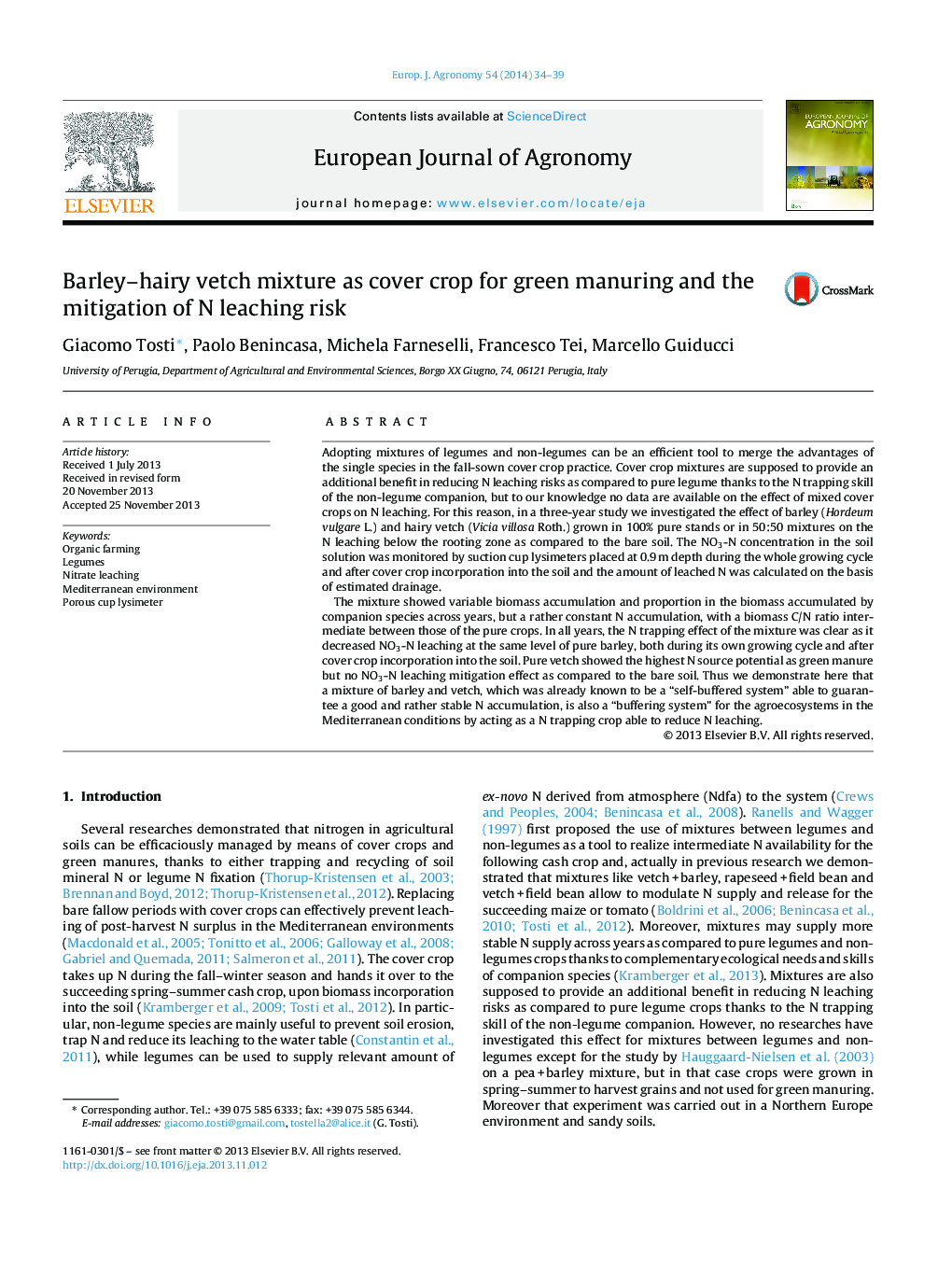| Article ID | Journal | Published Year | Pages | File Type |
|---|---|---|---|---|
| 4508974 | European Journal of Agronomy | 2014 | 6 Pages |
•Pure barley reduced N leaching but caused a low N availability in the soil.•Pure vetch supplied a lot of N, but was ineffective in reducing the N leaching risk.•Barley–vetch mixture assured a stable N accumulation (buffered system).•Barley–vetch mixture reduced NO3-N leaching risk (buffering system).•An optimized “cover crop strategy” should always prefer mixtures to pure stands.
Adopting mixtures of legumes and non-legumes can be an efficient tool to merge the advantages of the single species in the fall-sown cover crop practice. Cover crop mixtures are supposed to provide an additional benefit in reducing N leaching risks as compared to pure legume thanks to the N trapping skill of the non-legume companion, but to our knowledge no data are available on the effect of mixed cover crops on N leaching. For this reason, in a three-year study we investigated the effect of barley (Hordeum vulgare L.) and hairy vetch (Vicia villosa Roth.) grown in 100% pure stands or in 50:50 mixtures on the N leaching below the rooting zone as compared to the bare soil. The NO3-N concentration in the soil solution was monitored by suction cup lysimeters placed at 0.9 m depth during the whole growing cycle and after cover crop incorporation into the soil and the amount of leached N was calculated on the basis of estimated drainage.The mixture showed variable biomass accumulation and proportion in the biomass accumulated by companion species across years, but a rather constant N accumulation, with a biomass C/N ratio intermediate between those of the pure crops. In all years, the N trapping effect of the mixture was clear as it decreased NO3-N leaching at the same level of pure barley, both during its own growing cycle and after cover crop incorporation into the soil. Pure vetch showed the highest N source potential as green manure but no NO3-N leaching mitigation effect as compared to the bare soil. Thus we demonstrate here that a mixture of barley and vetch, which was already known to be a “self-buffered system” able to guarantee a good and rather stable N accumulation, is also a “buffering system” for the agroecosystems in the Mediterranean conditions by acting as a N trapping crop able to reduce N leaching.
